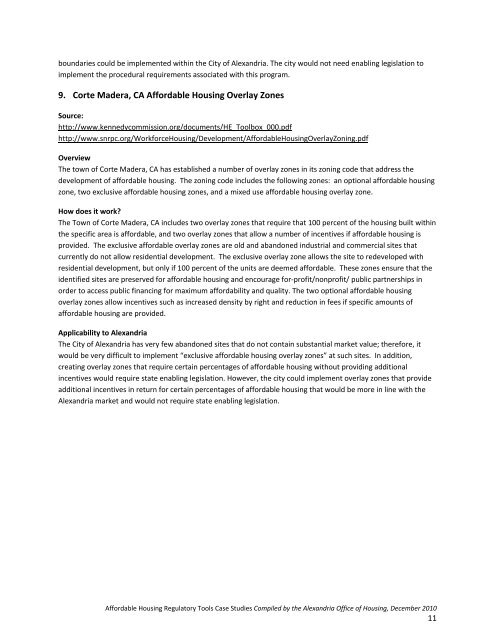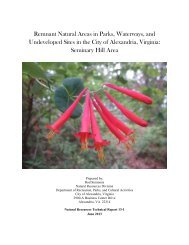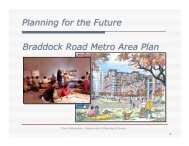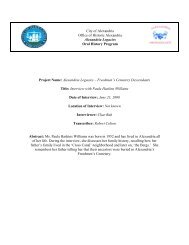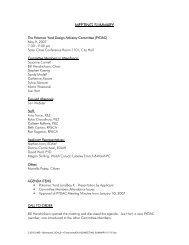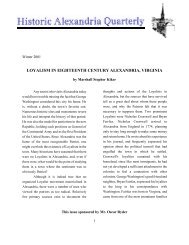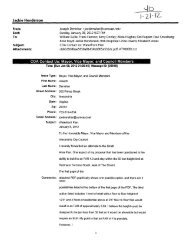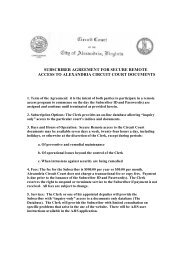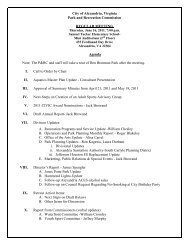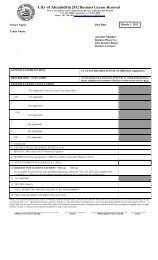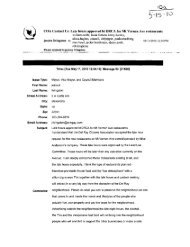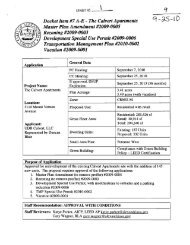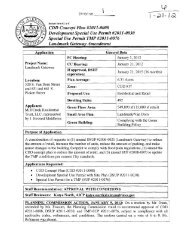Case Studies - Affordable Housing Regulatory ... - City of Alexandria
Case Studies - Affordable Housing Regulatory ... - City of Alexandria
Case Studies - Affordable Housing Regulatory ... - City of Alexandria
You also want an ePaper? Increase the reach of your titles
YUMPU automatically turns print PDFs into web optimized ePapers that Google loves.
oundaries could be implemented within the <strong>City</strong> <strong>of</strong> <strong>Alexandria</strong>. The city would not need enabling legislation to<br />
implement the procedural requirements associated with this program.<br />
9. Corte Madera, CA <strong>Affordable</strong> <strong>Housing</strong> Overlay Zones<br />
Source:<br />
http://www.kennedycommission.org/documents/HE_Toolbox_000.pdf<br />
http://www.snrpc.org/Workforce<strong>Housing</strong>/Development/<strong>Affordable</strong><strong>Housing</strong>OverlayZoning.pdf<br />
Overview<br />
The town <strong>of</strong> Corte Madera, CA has established a number <strong>of</strong> overlay zones in its zoning code that address the<br />
development <strong>of</strong> affordable housing. The zoning code includes the following zones: an optional affordable housing<br />
zone, two exclusive affordable housing zones, and a mixed use affordable housing overlay zone.<br />
How does it work?<br />
The Town <strong>of</strong> Corte Madera, CA includes two overlay zones that require that 100 percent <strong>of</strong> the housing built within<br />
the specific area is affordable, and two overlay zones that allow a number <strong>of</strong> incentives if affordable housing is<br />
provided. The exclusive affordable overlay zones are old and abandoned industrial and commercial sites that<br />
currently do not allow residential development. The exclusive overlay zone allows the site to redeveloped with<br />
residential development, but only if 100 percent <strong>of</strong> the units are deemed affordable. These zones ensure that the<br />
identified sites are preserved for affordable housing and encourage for‐pr<strong>of</strong>it/nonpr<strong>of</strong>it/ public partnerships in<br />
order to access public financing for maximum affordability and quality. The two optional affordable housing<br />
overlay zones allow incentives such as increased density by right and reduction in fees if specific amounts <strong>of</strong><br />
affordable housing are provided.<br />
Applicability to <strong>Alexandria</strong><br />
The <strong>City</strong> <strong>of</strong> <strong>Alexandria</strong> has very few abandoned sites that do not contain substantial market value; therefore, it<br />
would be very difficult to implement “exclusive affordable housing overlay zones” at such sites. In addition,<br />
creating overlay zones that require certain percentages <strong>of</strong> affordable housing without providing additional<br />
incentives would require state enabling legislation. However, the city could implement overlay zones that provide<br />
additional incentives in return for certain percentages <strong>of</strong> affordable housing that would be more in line with the<br />
<strong>Alexandria</strong> market and would not require state enabling legislation.<br />
<strong>Affordable</strong> <strong>Housing</strong> <strong>Regulatory</strong> Tools <strong>Case</strong> <strong>Studies</strong> Compiled by the <strong>Alexandria</strong> Office <strong>of</strong> <strong>Housing</strong>, December 2010<br />
11


